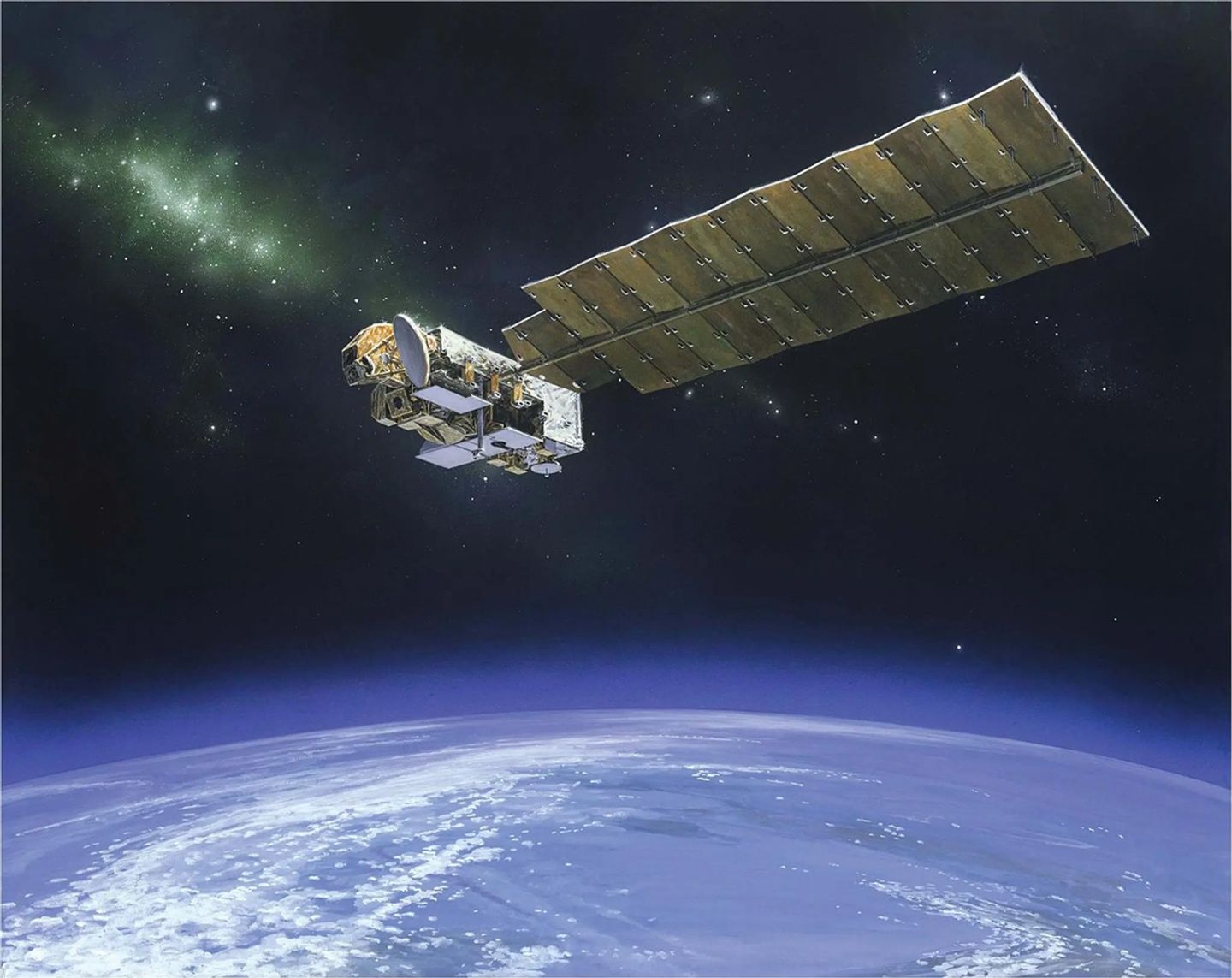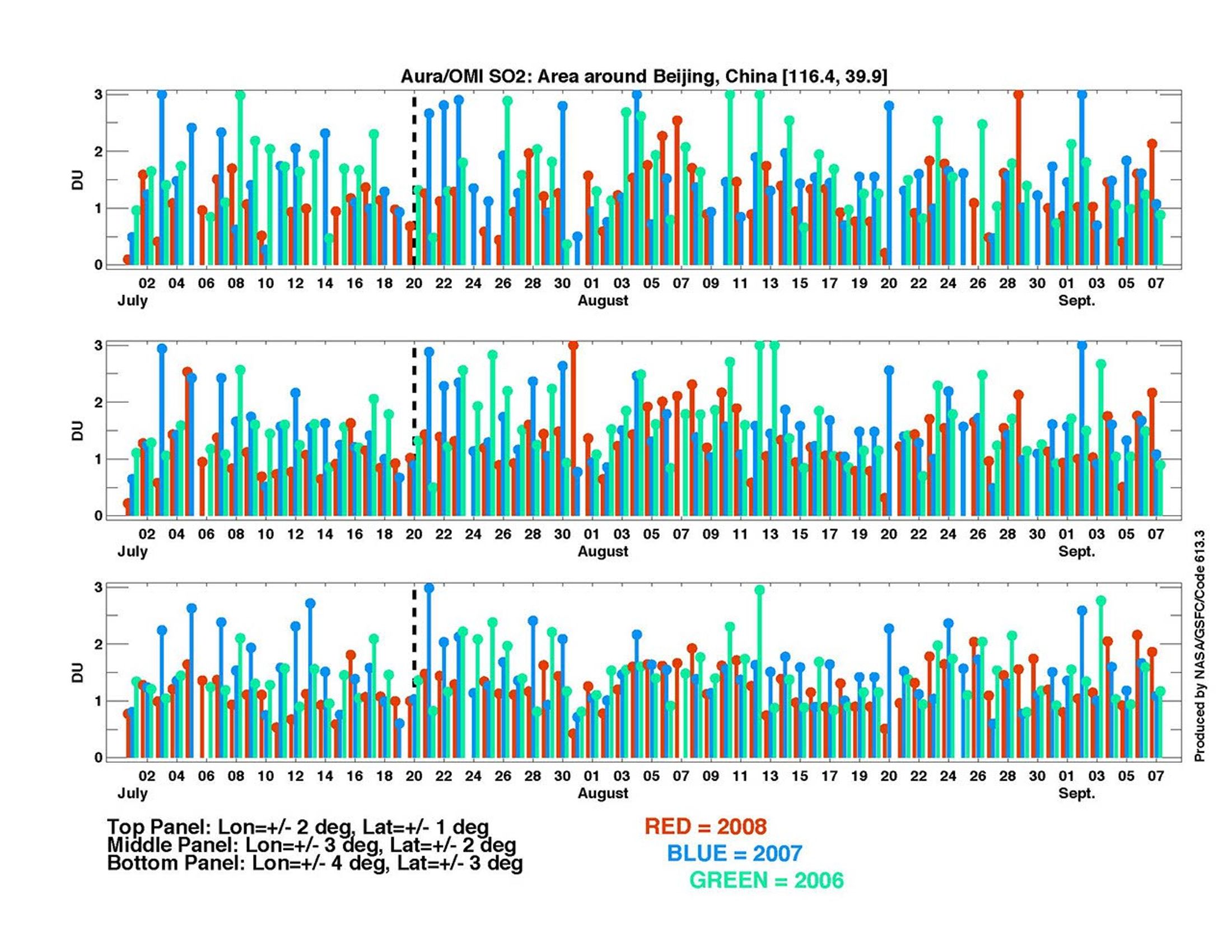Aura Monitors the Air Quality during the Bejing Olympics
Aura's Ozone Monitoring Instrument (OMI) makes daily measurements of the total column of sulfur dioxide (SO2) and nitrogen dioxide (NO2). Volcanic eruptions can produce large amounts of SO2. Formaldehyde (HCHO) is a volatile hydrocarbon which reacts with NO2 to form ozone.
Comparable large values of SO2 are found when high sulfur coal is used in power plants. Nitrogen dioxide is a product of high temperature combustion. Cars, trucks and buses all emit NO2, and OMI NO2 measurements show high values in cities and along heavily used highways. Power plants also emit NO2. OMI measures these gases over the sunlit part of the Earth every day.
The Chinese government placed restrictions on traffic and power plants to improve air quality in Beijing during the Olympics. OMI measurements show how successful these efforts have been by comparing the SO2 and NO2 values for this year with measurements in 2006 and 2007 without the restrictions.
A Three Year Look
Compare nitrogen dioxide, sulfur dioxide and formaldehyde measurements in the troposphere
12.16.2008
OMI
Aura’s Ozone Monitoring Instrument (OMI) instrument can distinguish between aerosol types, such as smoke, dust, and sulfates, and measures cloud pressure and coverage, which provides data to derive tropospheric ozone.…
Learn More






























